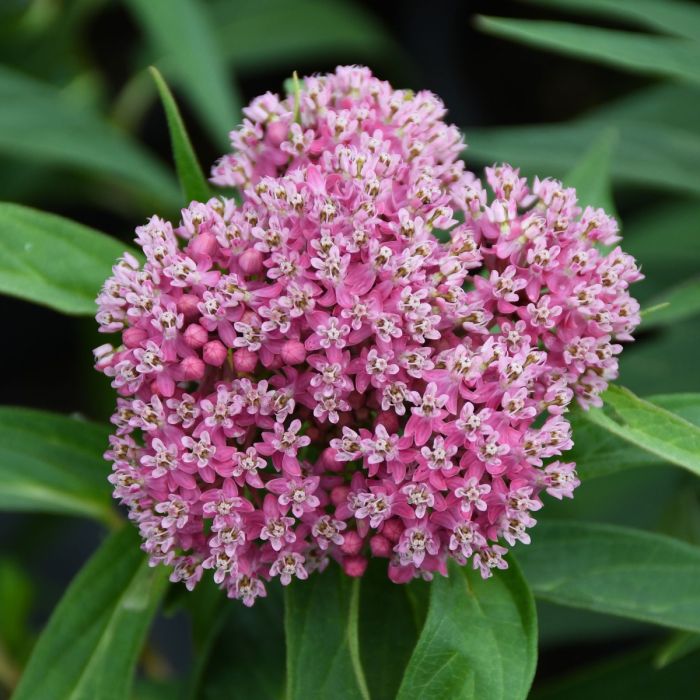Asclepias, Swamp Milkweed 'Minnesota Native'



Out of stock
Sold out for the season- Sun Preference
- Full-Sun
- Bloom or Harvest Time
- June, July
Description
This milkweed is an erect, clump forming native plant. It forms small fragrant pink to mauve flowers that appear in tight clusters followed by attractive seed pods. Thrives along ponds and streams. Attracts butterflies.
Minnesota's Largest Selection of Perennials
Discover an unparalleled selection of perennials at Gertens! With the largest variety in Minnesota, we offer endless options of colorful perennials, natives, and pollinator plants to beautify your garden year after year. From vibrant flowers to lush foliage, our perennials are perfect for adding beauty and charm to your outdoor space. Visit Gertens today and see why we're known as Minnesota's Destination Garden Center!
Details
Swamp Milkweed | Asclepias incarnata
Plant Height: 3 feet
Flower Height: 4 feet
Spread: 32 inches
Sunlight: full sun to partial sun
Hardiness Zone: 2a
Other Names: Butterfly Weed
Brand: Gertens
Description:
Erect, clumping form; small fragrant pink-to-mauve blossoms attract butterflies; thrives along ponds and streams
Ornamental Features
Swamp Milkweed has fuchsia flat-top flowers with rose overtones at the ends of the stems from mid summer to early fall. The flowers are excellent for cutting. Its narrow leaves remain grayish green in color throughout the season.
Landscape Attributes
Swamp Milkweed is an herbaceous perennial with an upright spreading habit of growth. Its medium texture blends into the garden, but can always be balanced by a couple of finer or coarser plants for an effective composition.
This is a relatively low maintenance plant, and is best cleaned up in early spring before it resumes active growth for the season. It is a good choice for attracting butterflies to your yard, but is not particularly attractive to deer who tend to leave it alone in favor of tastier treats. It has no significant negative characteristics.
Swamp Milkweed is recommended for the following landscape applications;
- Mass Planting
- General Garden Use
- Naturalizing And Woodland Gardens
- Bog Gardens
Planting & Growing
Swamp Milkweed will grow to be about 3 feet tall at maturity extending to 4 feet tall with the flowers, with a spread of 32 inches. It tends to be leggy, with a typical clearance of 1 foot from the ground, and should be underplanted with lower-growing perennials. It grows at a medium rate, and under ideal conditions can be expected to live for approximately 10 years. As an herbaceous perennial, this plant will usually die back to the crown each winter, and will regrow from the base each spring. Be careful not to disturb the crown in late winter when it may not be readily seen!
This plant does best in full sun to partial shade. It is quite adaptable, prefering to grow in average to wet conditions, and will even tolerate some standing water. It is not particular as to soil type or pH. It is quite intolerant of urban pollution, therefore inner city or urban streetside plantings are best avoided. This species is native to parts of North America.
More Information
| Gerten Grown Plants | Gerten Grown Plants |
|---|---|
| MN Native Plants | MN Native Plants |
| Sun Preference | Full-Sun |
| Bloom or Harvest Time | June, July |
| Mature Spread (Range) | 12" - 24" |
| Mature Height (Range) | 37" - 48" |
| USDA Hardiness Zone | 2, 3, 4, 5, 6, 7, 8 |


